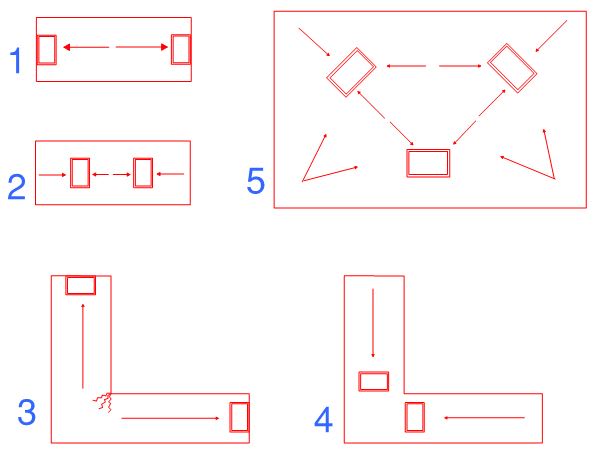Drapes
Structural
- Oct 27, 2012
- 97
I started a thread a couple of years ago seeking some advice on the relationship b/w the overall length of a suspended slab and the need to provide movement joints (link provided herewith for those interested).
Following on from this, I was wondering what length of slab is actually considered in determining whether a movement joint will be required. I have provided a crude sketch below giving 5x scenarios to help facilitate discussion. As a default, most engineers would simply and conservatively take the max overall length of the slab without considering the points of high restraint offered by say the core walls.
For case no 1, I understand you would take the full length of the slab as part of this assessment (that's a given), however for case no 2, I would argue you could take the effective length b/w the core walls as the extent/degree of expansion/contraction in the slab would be dictated b/w points of high restraint. The length of the outstanding portions beyond the core would then be treated separately.
Similarly, for case no 5 you would consider the triangulated lengths b/w the core walls, and the outstanding portions beyond the core to the corners of the slab would be treated separately.
For case no 3, we have an L-shaped slab with the core walls located at the far ends which will almost always warrant a movement joint (or at the very least a delayed pour strip depending on the length of each wing) given the fact we have a re-entrant slab arrangement, however for case no 4 the stresses imposed at the re-entrant point would be significantly reduced as the core walls have been brought in which would intercept or negate any high re-entrant stresses, so each wing could arguably be treated separately and a movement joint may not be required.
Look forward to hearing other peoples thoughts on this.

Following on from this, I was wondering what length of slab is actually considered in determining whether a movement joint will be required. I have provided a crude sketch below giving 5x scenarios to help facilitate discussion. As a default, most engineers would simply and conservatively take the max overall length of the slab without considering the points of high restraint offered by say the core walls.
For case no 1, I understand you would take the full length of the slab as part of this assessment (that's a given), however for case no 2, I would argue you could take the effective length b/w the core walls as the extent/degree of expansion/contraction in the slab would be dictated b/w points of high restraint. The length of the outstanding portions beyond the core would then be treated separately.
Similarly, for case no 5 you would consider the triangulated lengths b/w the core walls, and the outstanding portions beyond the core to the corners of the slab would be treated separately.
For case no 3, we have an L-shaped slab with the core walls located at the far ends which will almost always warrant a movement joint (or at the very least a delayed pour strip depending on the length of each wing) given the fact we have a re-entrant slab arrangement, however for case no 4 the stresses imposed at the re-entrant point would be significantly reduced as the core walls have been brought in which would intercept or negate any high re-entrant stresses, so each wing could arguably be treated separately and a movement joint may not be required.
Look forward to hearing other peoples thoughts on this.




